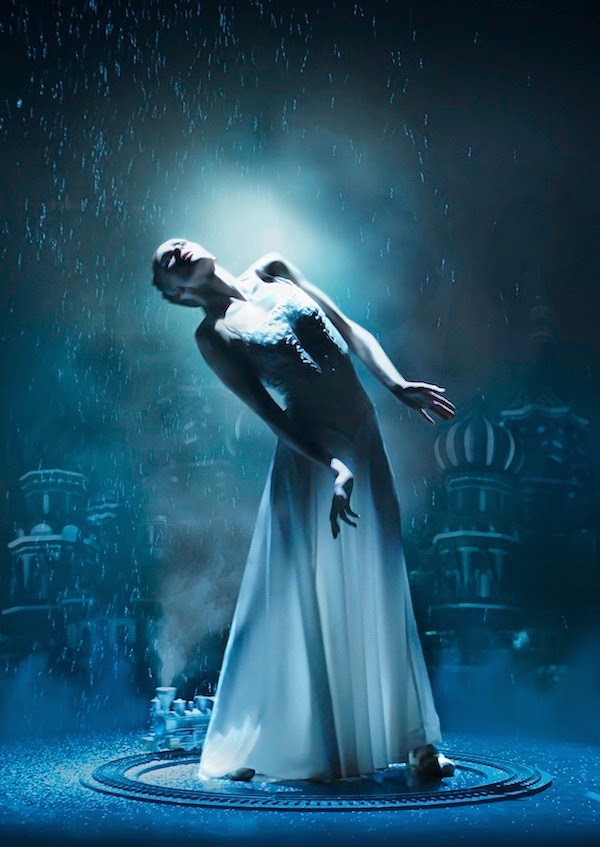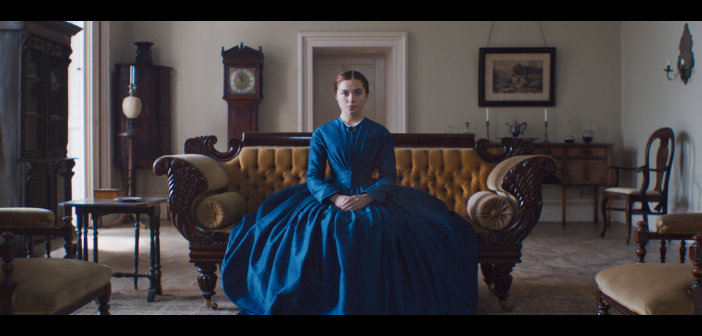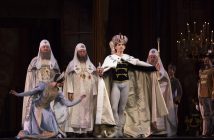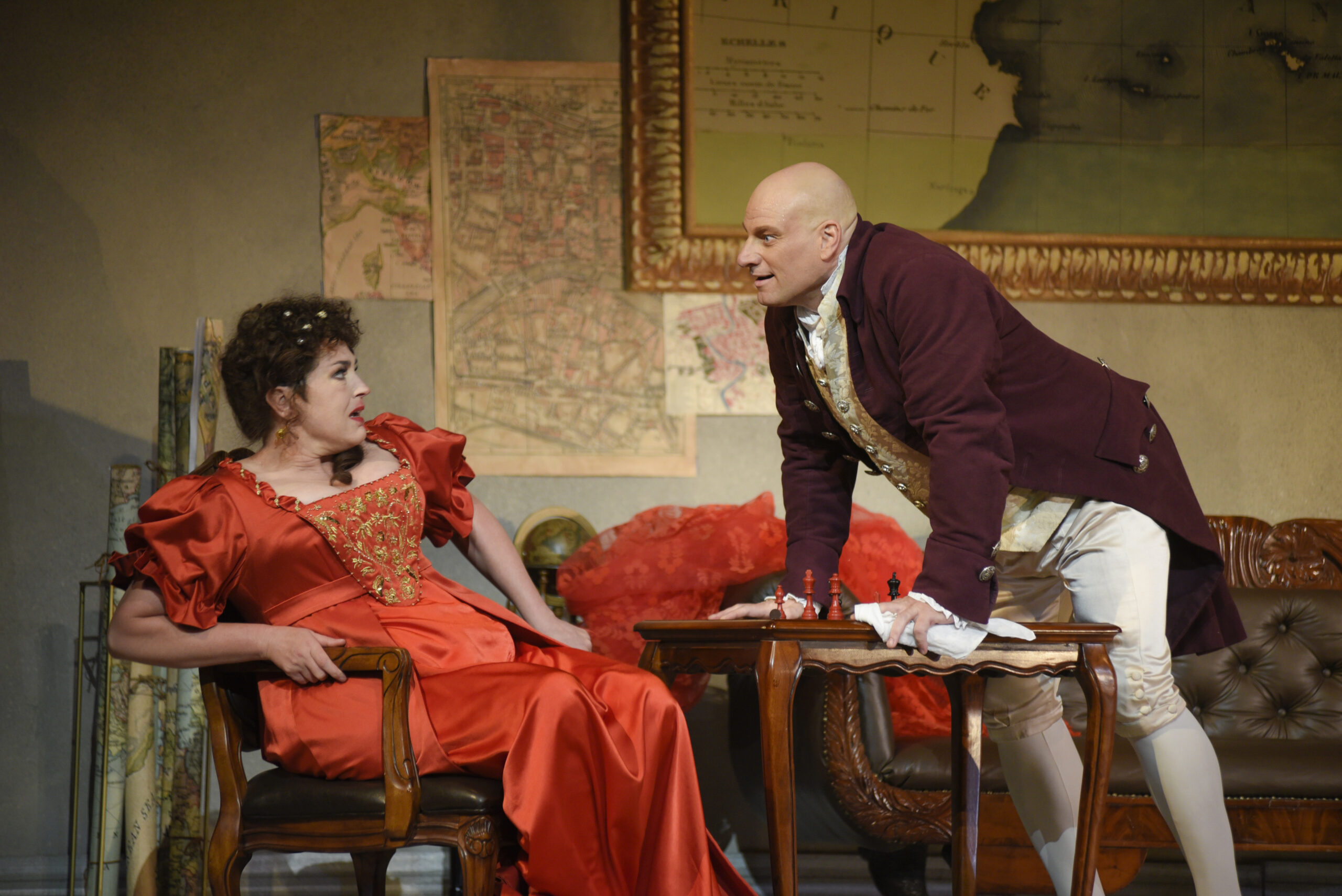Is Anna Karenina the greatest novel ever written?
Dostoyevsky and Nabokov declared it “flawless.” Faulkner described it as “the best ever written.” Hemingway, Woolf, Proust, Joyce, Mann, and countless others learned large parts of their craft from it. In 2007, Time magazine published a poll of 125 big-name authors – from Norman Mailer to David Foster Wallace – which placed Tolstoy’s epic tale of outlaw passion and self-destruction at Number One in a list of “The Top Ten Books of All Time.”
Numerous stage, film, television, radio, opera, dance, and other adaptions of Anna Karenina have swelled consciousness for more than 100 years; a 2012 film version starred Keira Knightley and Jude Law. And now over four nights and one afternoon in mid-April 2015, St. Petersburg’s Eifman Ballet will perform their 2005 version of Anna Karenina in Montreal.
Choreographer Boris Eifman isn’t celebrated for his subtlety. Some see too much yang and not enough yin in his work, and compare him unfavourably to George Balanchine. But can’t we just enjoy extreme emotions belted out with staggering energy and technical virtuosity? Every artist works differently. It is our duty to watch carefully. We mustn’t always reflexively and harshly judge every new work against the masterpieces of the past.

Photo: Damian Siqueiros
We hear the death train coming.
It comes, and Anna throws
herself under its carriage, for love.
In Anna Karenina, Eifman eschews subplots and focuses on the trichotomy of Anna, her tedious bureaucrat husband Karenin, and her dashing cavalry officer lover Vronsky. He keeps most of Tolstoy’s key themes and obsessions intact. What is this thing called life, then? What is our duty to society, marriage, children, family? Can we be happy? Eifman hears the echoes of these questions, and creates rituals with their reverberations. For him, dance is not an imitation of reality. It penetrates the very core of reality. It seizes on the roiling sea that is the subconscious, incantatory, sometimes terrifying and magical world that lives inside us. We intuit that somewhere inside us lives the true, natural world, a world not subject to society’s artifice. But we also know that society’s artifice is crucial to our very survival.
Anna’s passion condemns her to the life of an outcast. She cannot find happiness in her travels, in her husband’s rich estate, or in the habitual amusements of the society in which she lives. In the rapture of love, she strives toward the selfhood and inner peace that love cannot by itself endow. Even in her exalted state, she cannot find an unwavering self or an untroubled peace. How can she then experience the flames of love, outside her disappointing 19th century icebox marriage, except by melting into a dangerous passion?
At a high society ball in Moscow (where Anna and Vronsky fall in love); at a racetrack in St. Petersburg (where a reckless Vronsky breaks his horse’s back); during a carnival assembly in Venice (where sinister masks glisten in the mist); we see hypocrisy, jealousy, faith, fidelity, and carnality sway, leap, twirl, dart, and pirouette. We eye bodies rivering in desire, longing, consummation, and torment. We observe Anna’s fluid thoughts and free associations tumble out in a stream of consciousness made of ardent signals, gestures of anxiety and, finally, a desperate lust for oblivion. We delight in the intricate patterns that all these bodies create; we delight, and we squirm. In inchoate rage, Karenin rapes his wife. In bitter betrayal, Vronsky destroys the Orthodox Church of Anna’s mind, like a bomb dropping on St. Petersburg’s exquisite Smolny Cathedral.
Even in her exalted state, Anna cannot find an unwavering self or an untroubled peace. How can she then experience the flames of love, outside her disappointing 19th century icebox marriage, except by melting into a dangerous passion?
Eifman is a master at creating effective visual equivalents of emotional states: a serenity of swans now promises bliss; a murder of crows now menaces it. Below an ominous bridge, intermittently lit up by lightning obscured by fog, a turmoil of dancers pulses and churns like the contents of Anna’s psyche. We hear the deathtrain coming. It comes, and Anna throws herself under its carriage, for love.
The music is a mélange of 14 pieces by Tchaikovsky. The stylistic and emotional range of Russia’s greatest composer orbits and sweeps the dancers through the Mozartian charm of his Serenade for Strings, the foreboding ofRoméo et Juliette, and the devastation of the Pathétique.
Boris Eifman founded his now nearly 60-dancer company in 1977. Though grounded in the 300-year-old tradition of Russian classical ballet, he achieved an early reputation as a “choreographic dissident.” In the teeth of the Soviet dance apparatchiks, he fused expressionist theatricality and a contemporary intellectual and psychological outlook into the received language of ballet. In his new dialect, emotion prisms through strikingly sharp and precise patterns and impulses that disrupt the fluid lines of tradition. His is an audacious individual reformation of classical rigour for our time. It marries modern showmanship with a traditional sophistication that traces back to the court of Peter the Great.
Eifman has created more than 40 dances in his St. Petersburg choreographic laboratory, a perpetual motion machine for one maestro’s vision.
“Ballet is a very special art form that allows us to delve into the subconscious and the heart of psychological drama,” says Eifman. “Anna Karenina allows us not only to go deep into the heroine’s psyche, but also to fully understand her psychoerotic essence.
“What is more important: to preserve the widely accepted illusion of harmony between duty and emotion, or to allow true passion to take over? These questions beleaguered Tolstoy, and they are still inescapable today. Yet there are no answers. There is only the unquenchable thirst for understanding, either in life or in death.”
Eifman Ballet performs Anna Karenina, April 15-17 at 8 pm and April 18 at 2 pm and 8 pm in Salle Wilfrid-Pelletier of Place des Arts, Montreal. Presented by Les Grands Ballets Canadiens. Tickets: $62-$124. 514-842-2112. www.pda.qc.ca















